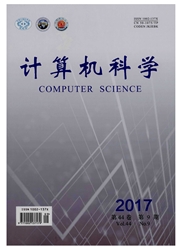

 中文摘要:
中文摘要:
压缩感知理论借助信号内在的稀疏性或可压缩性,利用随机投影实现在远低于奈奎斯特频率的采样频率下对压缩数据进行采集。将该技术应用于医学成像领域可以加快MRI/MRA的扫描速度,提高扫描效率,减少患者的不适感。以NLTV(Nonlocal Total Variation)正则化来改善传统TV导致的边缘模糊、阶梯效应等缺点,提出改进的NESTA算法(简称NLTV-ROI-NESTA算法)实现MRI/MRA图像感兴趣区域(Region of Interests,ROIs)的精确重构,增强低对比度血管的细节信息,以峰值信噪比、结构化相似度、相对误差3个指标来定性、定量地评价算法的性能。实验结果表明,与传统的压缩感知重构算法相比,NLTV-ROI-NESTA算法在重构精度和细节保留方面均具有明显优势,能较好地保持低对比度血管或其他感兴趣区域的细节特征,在快速医学成像领域具有广阔的应用前景。
 英文摘要:
英文摘要:
Compressed sensing (CS) is a novel developed theoretical framework for information acquisition and proces- sing. Taking advantages of the inherent sparsity or compressibility in real world signals,CS can collect compressed data at the sampling rate much lower than that needed in Shannon's theorem. CS is used to medical imaging techniques to ac- celerate the scanning speed of MRI/MRA, improve the scanning efficiency and alleviate the patients' suffering. The flow chart of our NLTV-RO1-NESTA algorithm is as follows. The nonlocal total variation (NLTV) is applied to over- come the disadvantages of the traditional TV for its edge blurring and stepstairs effects. An improved NESTA algo- rithm is used to reconstruct the region of interests (ROIs) for MRI/MRA images accurately and fast to maintain or en hance the details of the low-contrast vessels. Three indices: peak signal to noise rate (PSNR), structural similarity index (SSIM) and relative 12 norm error (RI.NE) are adopted to compare the reconstruction performances and clinical value of the ordinary CS-MRI algorithms and our ROI-CS-MRI algorithm qualitatively and quantitatively. Experimental re- sults demonstrate that the proposed NLTV-ROI NESTA algorithm is superior in reconstruction accuracy and detail fea tures when the undersampled ratio changed from 10% to 50~/00,which can be extended and widely used in rapid medical imaging technology.
 同期刊论文项目
同期刊论文项目
 同项目期刊论文
同项目期刊论文
 期刊信息
期刊信息
